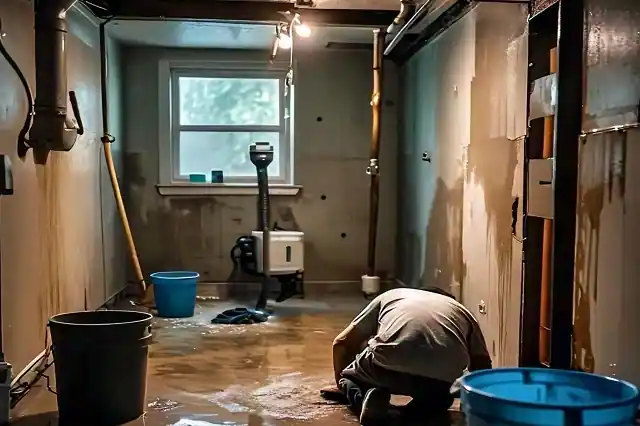Homeownership has its benefits and drawbacks, and unforeseen home repairs can be one of the most difficult. A burst pipe flooding your basement or a leaking roof, following a storm, are just two examples of how emergencies can happen at any time, leaving homeowners anxious and strapped for cash. Grants for urgent home repairs can help with that.
We will explore emergency home repair grants in this guide, including what they are, who is eligible, how to locate and apply for them, and how to maximize the help that is offered.
What Are Emergency Home Repair Grants
Emergency home repair grants are financial assistance programs intended to assist homeowners with urgent repairs that compromise their home’s structural integrity, safety, or livability. Emergency grants are intended exclusively for circumstances that need immediate attention, as opposed to standard home repair grants, which may have more stringent eligibility requirements and application procedures. These grants may cover a wide range of emergencies, including:.
Natural disasters: Floods, hurricanes, earthquakes, and wildfires are examples of natural disasters that can cause damage. Grants might pay for fixes that restore the home’s safety and structural soundness.
Safety hazards: Safety hazards are problems that could endanger residents right away like gas leaks electrical malfunctions or structural damage. In order to address these risks and stop mishaps or injuries grants may be utilized.
Health issues: Repairs like mold removal, asbestos removal or lead paint abatement that are necessary to reduce health risks. The price of expert services to address these risks and enhance indoor air quality may be covered by grants.
Urgent repairs: Any necessary repairs that if neglected could cause more harm or jeopardize the homes habitability are considered urgent repairs. This could involve fixing the heating plumbing or roofing systems to stop additional damage or deterioration.
Read- Free Home Improvement Grants For Veterans and Low-Income Families
With the help of emergency repair grants, homeowners who experience unforeseen emergencies should be able to return their homes to safe and usable conditions as soon as possible.
Who Qualifies for Emergency Home Repair Grants?
While each program and funding source may have different requirements for emergency home repair grants applicants should take into account a few common factors.
Income Restrictions: In order to guarantee that aid reaches the people who need it most, many emergency grant programs impose income restrictions. These income thresholds are usually determined by the number of household members and the median income in the area. Programs may stipulate, for instance, that qualified candidates must earn less than 80% of the area median income (AMI) for their size of household size. Practically speaking, this could imply that a family of four who earn less than $60000 annually might be eligible for aid.
Homeowner Status: In most cases, homeowners are the only ones eligible for emergency repair grants, not renters or landlords. This criterion guarantees that the aid is allocated to the individuals in charge of property maintenance. As part of the application process, homeowners are required to submit documentation attesting to their ownership, such as a mortgage statement or deed.
Type of emergency: Homeowners must show that their circumstances fit the program’s requirements because grants may be intended for particular emergency categories, such as natural disasters or safety hazards.
Read- Free Home Repair Grants and Improvements for Low-Income Teachers
Age and Disability Criteria
Certain initiatives target people with disabilities and senior homeowners in particular. To illustrate homeowners who are 62 years of age or older and unable to repay a repair loan are eligible for USDA Section 504 home repair grants.
Geographic Location
Geographical location determines eligibility for certain grants. Certain states or municipalities’ urban neighborhoods and rural areas may have programs specifically designed to meet local needs.
Evidence: Candidates might be asked to submit proof of their income, homeownership status, and the type of emergency like pictures or repair quotes.
Homeowners must carefully read each grant program’s eligibility requirements to see if they are eligible for help.
How to Find Emergency Home Repair Grants
Although it can be difficult to find emergency home repair grants, homeowners can find help from a number of resources.
Read- Free Roof Replacement Grants For Senior Citizens- Benefits
Government Programs
Federal, state, and local government organizations allot funds to give qualified homeowners emergency home repair grants. These initiatives seek to guarantee homes are safe and livable while also attending to urgent needs. The following are a few instances.
The U. S. Federal Housing Programs: Housing rehabilitation and repair are among the community development activities for which states and local governments receive funding through the Community Development Block Grant (CDBG) program, one of the grant programs offered by the Department of Housing and Urban Development (HUD).
State Housing Authorities: Frequently state housing authorities manage emergency repair grant programs that are customized to meet the needs of locals. For example, to help low-income homeowners with necessary repairs, the California Department of Housing and Community Development (HCD) offers grants through the Single Family Housing Repair Loans and Grants program.
Read- Free Energy Efficient Window Replacement Grants For Veterans
Local Government Initiatives: Emergency repair grants are provided to homeowners within the jurisdiction of many cities and counties by housing departments or community development organizations. For instance, to address urgent issues endangering public health and safety, the Department of Housing Preservation and Development (HPD) of the City of New York offers grants through its Homeowner Repair Loan Program.
To find out about available programs and eligibility requirements homeowners can visit the websites or get in touch with their local government offices.
Nonprofit Organizations
In order to provide emergency home repair assistance, especially to underprivileged communities and vulnerable populations nonprofit organizations are essential. To support their initiatives these organizations may be given money by governmental organizations, private donors, and charitable foundations. Some examples are as follows.
Habitat for Humanity: To assist low-income homeowners with safety, accessibility, and energy efficiency concerns, Habitat for Humanity affiliates nationwide provide essential home repair programs. To keep costs down for homeowners, these programs rely on donated materials and volunteer labor.
Rebuilding Together: This nationwide nonprofit organization collaborates with skilled tradespeople, volunteers, and corporate sponsors to offer low-income homeowners, veterans, and senior citizens free home repairs. Safety hazards and emergency repairs are the main topics of their Safe at Home program.
Local Community Action Agencies: Community action agencies provide a variety of services, including emergency home repair assistance and are present in many communities. To support their initiatives, these organizations may be eligible to receive federal, state, and local funding. For instance, the Weatherization Assistance Program of the Community Action Partnership of San Luis Obispo County in California funds emergency repairs for qualified homeowners.
For help with urgent home repairs homeowners can look up nearby nonprofits get in touch with community action organizations or ask social service agencies for recommendations.
Online Databases
In order to assist homeowners in navigating the resources that are available a multitude of websites and databases compile information on housing assistance programs, including emergency home repair grants. These online resources might offer searchable databases, eligibility requirements, guidelines, for applying and contact details for pertinent programs. These are a few examples.
Benefits.gov: Individuals can use this government website‘s search function to locate government benefits, such as housing assistance programs, according to their state and individual requirements. Users have the ability to filter results by category, including home modifications and repairs. A nationwide service
211.org: 21.org links people and families to vital community resources such as housing assistance programs. Users can obtain information on local services such as emergency home repair grants by calling 2-1-1 or going to the website.
Local Housing Authority Websites: A number of housing authorities keep up-to-date websites that provide details on housing initiatives and services accessible to locals. Directories of emergency repair grant programs application forms and helpline numbers may be found on these websites.
By looking through these resources, homeowners can find possible help providers and start the application process.
Applying For Emergency Home Repair Grants
Homeowners must then prepare, and submit their applications after identifying possible grant programs. This is a detailed guide to the application procedure.
Obtain documentation: Homeowners should collect any necessary paperwork prior to applying including evidence of wealth proof of property ownership and emergency documentation (e. g. A. photos and estimates for repairs).
Examine eligibility: Make sure you meet all the requirements and that the emergency qualifies for assistance by carefully going over the eligibility requirements for each grant program.
Complete the application: Complete the grant programs application forms giving precise and thorough details about your circumstances and the repairs that are required.
Submit supporting materials: Include any required supporting materials with your application, such as photographs, repair estimates, or letters of recommendation.
Following up: Get in touch with the grant program to find out if your application was received and to find out its current status. Be ready to offer more details or supporting documentation upon request.
By following these steps, homeowners can increase their chances of success in securing emergency repair grants to address their critical home repairs.
What to Expect After Applying
Homeowners might be unsure of what to do after applying for an emergency home repair grant. The usual procedure is summarized as follows.
Application review: The grant program will examine your application to make sure your emergency qualifies for aid and that you meet all eligibility requirements.
Home inspection: In certain situations the grant program might carry out a home inspection to determine the extent of the damage and confirm that repairs are required.
Grant program approval and funding: Should your application be accepted you will be notified and funds will be released to pay for the repairs.
Repairs: After receiving funding, homeowners can start working with skilled experts to fix the emergency.
Completion and reporting: In order to confirm that the money was spent as planned homeowners may be asked to provide the grant program with reports or supporting documentation after repairs are finished.
To guarantee a successful and seamless outcome, homeowners should stay in constant contact with the grant program and fulfill any obligations or deadlines.
Maximizing the Impact of Your Grant
Emergency home repair grants are a great way to help homeowners in need, but it is important to utilize the money that is available. The following advice will help you get the most out of your grant.
Prioritize repairs: To keep your house safe and livable, decide which repairs are most urgent and must be fixed right away.
Obtain multiple estimates: To compare options and make sure you are receiving a fair price for the repairs get estimates from several contractors.
Work with reputable professionals: Select insured and licensed contractors who have knowledge of the necessary repairs to guarantee high-quality work and adherence to building codes.
Communicate openly: Throughout the repair process, keep lines of communication open with your contractor to discuss any worries or problems that may come up.
Monitor progress: Stay actively involved in the repair process to ensure that work is progressing as planned and that any unexpected challenges are addressed promptly.
Document expenses: Keep thorough records of all costs associated with the repairs, including contracts, invoices, and receipts, so you can submit them to the grant program when required.
Homeowners can guarantee the efficient use of their emergency repair grant funds and the restoration of their homes to safe and livable conditions by following these steps.